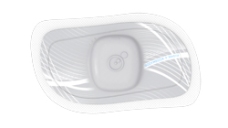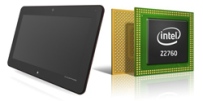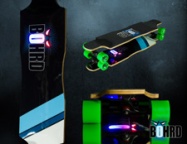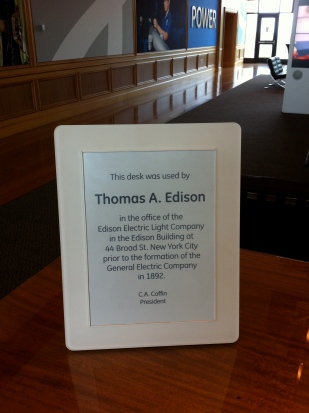Everyone knows the famous refrain, "What happens in Vegas, stays in Vegas." But for MEMS, you'll want what happens in Vegas to come home with you. Why? Because MEMS at CES has gone waaaaay beyond sensing your touch and letting you play Angry Birds.
MEMS Industry Group (MIG) is going back for a second year to International CES -- because MEMS is happening in Vegas. And baby, it's so cool and innovative and its applications are so new and exciting that it's coming home with you, too. At 2013 International CES MEMS will be ever-present; and MIG is helping it stand out even more this year with our half-day MEMS conference track on January 8.
We will kick off our conference track with a very special keynote from Mr. Klaus Meder, president of Bosch Automotive Electronics, entitled "The MEMS Generation: Why Miniature 'Machines' are changing the User Experience with Everything." Mr. Meder will discuss the connectivity of the automobile with the consumer, all enabled by the power of MEMS. I spoke with Mr. Meder earlier this fall regarding this keynote and was thrilled to hear his passion for MEMS and the role he sees it playing in what he calls this "interconnected lifestyle." In Meder's keynote, I expect that he will be taking the theory of the Internet of things one step further by demonstrating how a combination of MEMS and sensors are enabling our lives to be untethered by wires or roads. I was given a sneak peek of his presentation and got goose bumps when I saw the car of the future -- and I think you will, too.
Even though I expect our mouths will be agape after Mr. Meder finishes his keynote, we'll have to compose ourselves and move on with the show. Next up will be our panel "How to Never Get Lost in a Mall or a Museum: Indoor Navigation and the Smartphone." I am thrilled to see that this technology will soon be available in my smartphone with the aid of a combo of MEMS accelerometers, gyros, magnetometers and pressure sensors, creating a super-intelligent 10-axis mobile device. I am notorious for getting lost inside office buildings and any place where you can't see direct sunlight. I know my children (especially) are looking forward to the day when I have such a smart phone that will allow us to get step-by-step directions of how to find the Abercrombie & Fitch in a shopping mall -- with an ability to see what level it is on. I am going to have fun moderating these panelists and promise not to go too hard on them by asking them when I can pre-order my phone:
- Dan Brown, CEO, Sensor Platforms
- Seyed Paransun, vice president and general manager, Sensor and Actuator Solutions Division, Freescale Semiconductor
- Benedetto Vigna, corporate vice president and general manager, Analog, MEMS and Sensors Group, Industrial and Multisegment Sector, STMicroelectronics
Next I'll moderate the panel A Whole New Look for Digital Displays. Right now, MEMS-based technologies are the 'secret ingredient' in natural-looking color displays for impressive electronic applications such as the Kindle Fire. Based on the technology such as TI's DLP, developed for rear-projection televisions and home theater systems, MEMS is now leading a renaissance in projection systems through the smallest projector imaginable: the pico projector. I expect that soon we'll have high quality pico projectors in our mobile devices and MEMS-enabled Heads Up Displays assisting with navigation in our automobiles (it's already in use in Japan). This panel will cover the full range of what's hot in MEMS digital displays and you won't want to miss it. Panelists include:
- Evgeni Gousev, Senior Director of Engineering, Qualcomm Research
- Elan Roth, marketing and business development director, Analog MEMS and Sensors Group mobile projection business, STMicroelectronics
- Dale Zimmerman, vice president of R&D, MicroVision
I expect our last panel MEMS, Signal Quality, Smart Sound and the Mobile Handset is going to possibly be most inspiring of the three panels (feel free to prove me wrong). That's because we're talking about an issue that many of us hold so dear: the quality of our calls on our mobile handsets. Think about it, how many times a day do you drop a call or you can't hear the person on the other end? Isn't that annoying/frustrating? MEMS TO THE RESCUE! It's like the blog I recently wrote for EETimes, "A day without MEMS" -- well in a way, we are living it, because most of us don't yet have MEMS RF switches or MEMS microphones in our smartphones. C'mon mobile handset manufacturers, get with the program and get us our MEMS! New RF MEMS "tunable antennas," MEMS oscillators and microphones are helping manufacturers to create more physically robust phones while boosting signal integrity and sound quality. I am really looking forward to this discussion because I think they will mainly all agree with each other on how MEMS should be pervasive in every single mobile handset to cure all dropped calls and end all poor quality calls:
- Kieran Harney, product line director, Analog Devices
- Jeff Hilbert, president and founder, WiSpry
- Davin Yuknis, vice president of sales and marketing, Akustica
So mark your calendars and buy your conference passes now! The MEMS conference session takes place January 8, 2013, 9:00 a.m.-12:00 p.m., in the Las Vegas Convention Center (LVCC) North Hall, Room N264. If you are a MIG member, you automatically get a discount on your conference pass.
Don't forget that MIG is also hosting the MEMS TechZone, featuring members and partners with live demos of MEMS in consumer applications. The MEMS TechZone is located at the LVCC South Hall 2, Booth 25321. And remember, this time you'll want to take what happens in Vegas home with you.







